X1.0 solar flare from sunspot region 2192
Saturday, 25 October 2014 18:31 UTC
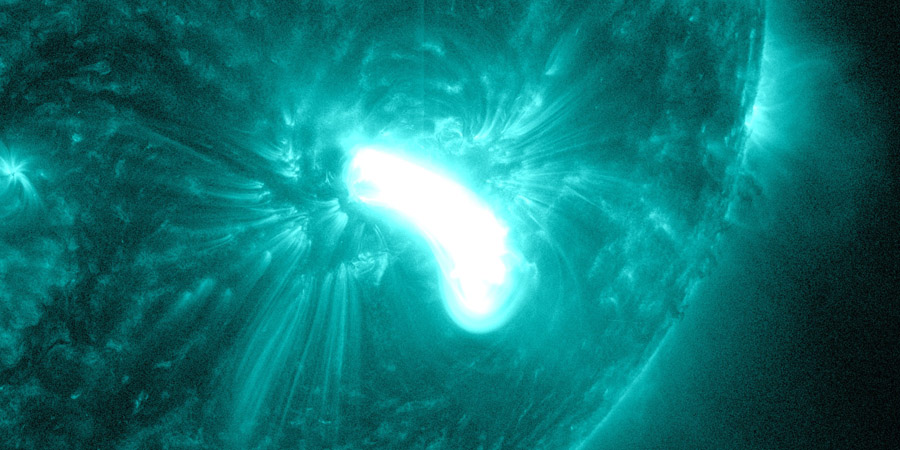
Sunspot region 2192 did it again! Less than 24 hours after the major X3.19 solar flare from yesterday, it now produced a major X1.04 (R3-strong radio blackout) solar flare at 17:08 UTC. This was already it's fourth X-class solar flare but again it looks like it did not launch a coronal mass ejection.
SDO/AIA 94 Ångström
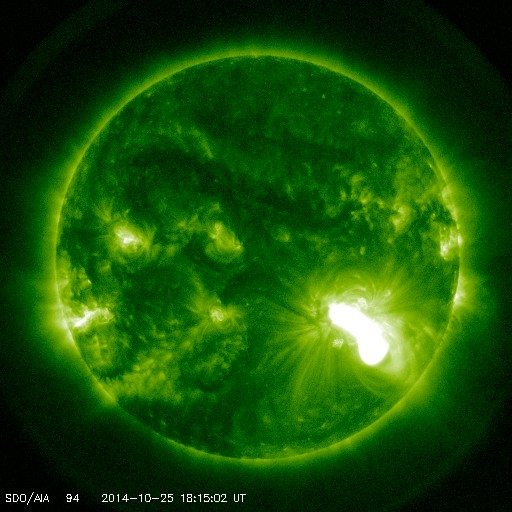
SDO/AIA 1600 Ångström
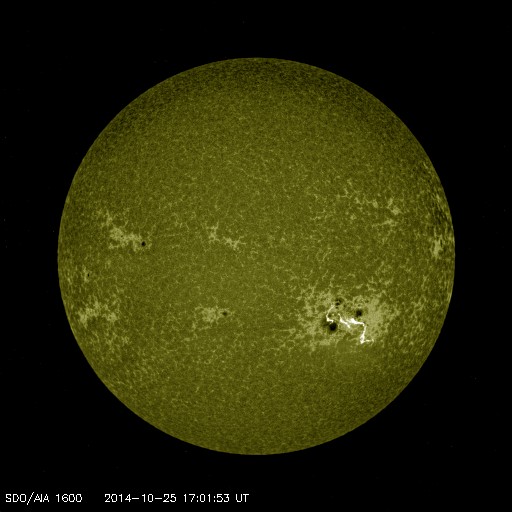
SDO/AIA 193 Ångström
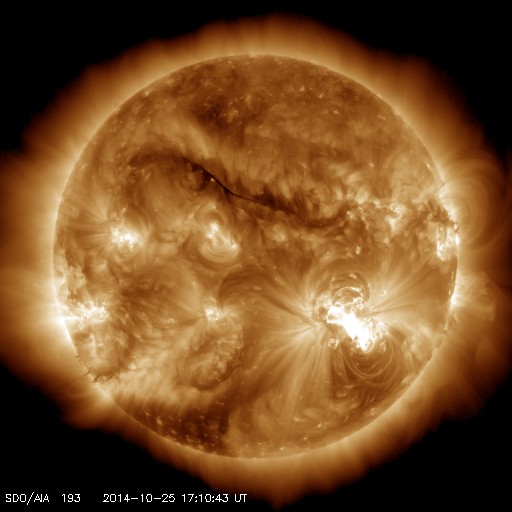
SDO/AIA 304 Ångström
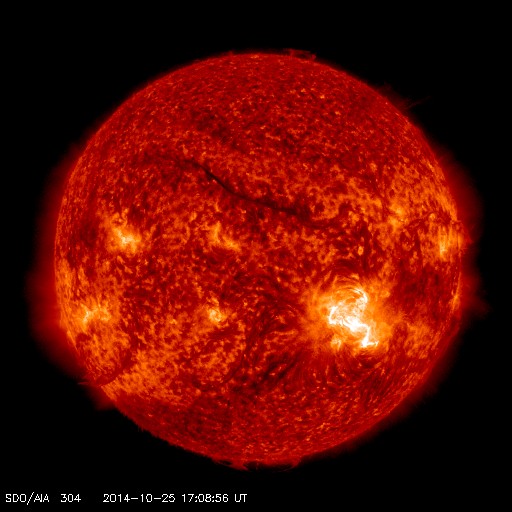
This solar flare looks very similar to the previous X-class solar flares. While coronagraph imagery is not yet available to confirm the launch of a coronal mass ejection, we can again conclude that due to the lack of any significant coronal dimming (traces in the solar corona of ejected material) there might not be a major coronal mass ejection associated with this event despite the long duration of the solar flare.
This post will be updated as soon as more information becomes available so keep checking back.
Be sure to also check out our other update that we posted today.
NOAA SWPC alerts
ALERT: X-Ray Flux exceeded M5 Threshold Reached: 2014 Oct 25 1659 UTC NOAA Scale: R2 - Moderate
SUMMARY: X-ray Event exceeded X1 Begin Time: 2014 Oct 25 1655 UTC Maximum Time: 2014 Oct 25 1708 UTC End Time: 2014 Oct 25 1811 UTC X-ray Class: X1.0 Optical Class: 3b Location: S12W30 NOAA Scale: R3 - Strong
No coronal mass ejection confirmation (ADDED: 21:45 UTC)
Today's X1 solar flare was similar to yesterday's X3 solar flare. Again no coronal mass ejection as seen on this image from SOHO/LASCO.
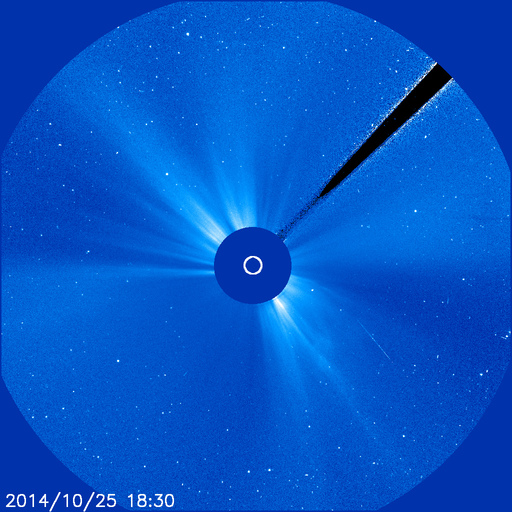
Images: NASA SDO and ESA/NASA SOHO.
Thank you for reading this article! Did you have any trouble with the technical terms used in this article? Our help section is the place to be where you can find in-depth articles, a FAQ and a list with common abbreviations. Still puzzled? Just post on our forum where we will help you the best we can!
Latest news
Latest forum messages
Support SpaceWeatherLive.com!
A lot of people come to SpaceWeatherLive to follow the Sun's activity or if there is aurora to be seen, but with more traffic comes higher server costs. Consider a donation if you enjoy SpaceWeatherLive so we can keep the website online!

Space weather facts
| Last X-flare | 2024/03/28 | X1.1 |
| Last M-flare | 2024/04/18 | M2.2 |
| Last geomagnetic storm | 2024/04/16 | Kp5 (G1) |
| Spotless days | |
|---|---|
| Last spotless day | 2022/06/08 |
| Monthly mean Sunspot Number | |
|---|---|
| March 2024 | 104.9 -19.8 |


